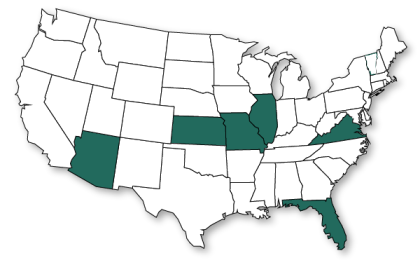Now that summer’s over and the weather is cooling down, it’s time to think about pulling your boat out and putting it away until next year.
As you prepare your boat for the winter, take the time to make sure it still has the right insurance protection.
First things first: Insurance
If you have a small boat with limited power, you may have some coverage under your homeowners or renters insurance policy. If you aren’t sure, please check with us. Of course, larger and faster boats, along with personal watercraft, require their own policies. And we can help with those, too!
But do you even need boat insurance during the offseason when your boat won’t even be in the water? Well, that depends. Keep in mind that your boat can still be damaged no matter where it is. Often, damage from fire and theft isn’t covered unless you have a watercraft policy. There always is the chance that we could get a streak of great weather in November that lures you to take the boat out on the river for a day or two. There are plenty of reasons to keep year-round coverage, but if you have questions about seasonal policies, give us a call.
While you’re thinking about insurance, consider your current watercraft coverage. Is your boat older? It might be time to move to cash-value coverage instead of agreed value. Do you have a lot of expensive fishing equipment? Make sure you have enough optional coverage so your gear isn’t at risk. You might also want to consider uninsured boater coverage and a personal umbrella policy, which provide more liability protection than a standard watercraft policy.
Remember, you might be able to save money on your insurance by taking a boating-safety course, increasing your deductible or bundling your policies with one company.
Now: A different kind of protection
After you’ve squared away protecting your boat with the right insurance options, it’s time to think about protecting your boat in a more literal sense – by properly preparing it for winter. Below are some general tips to follow, but, of course, you should check your owner’s manuals for manufacturer recommendations.
Your engine
Follow manufacturer instructions when winterizing your engine, but you’ll want to flush the engine with fresh water and make sure to drain fuel from the carburetor to prevent a build-up of deposits. Use fogging oil in the cylinders to lubricate cylinder walls and pistons.
Stern drive
Do a thorough inspection and remove plant life or barnacles from the lower unit. Drain the gear case and clean the lower unit with soap and water.
Fuel tanks
Fill your fuel tanks to avoid a buildup of condensation and add fuel stabilizer, following the product instructions.
Fresh water system
Drain the fresh water tank and water heater, and pump a nontoxic antifreeze into the system. Then, turn on all faucets until you see the antifreeze coming out.
Interior
Remove all valuables from the boat. Clean drawers thoroughly, and turn cushions on their edges to allow air to circulate. Clean the refrigerator and freezer.
Cover it up!
A cover will keep your boat clean and protect it from water and UV rays, which can break down hoses and fade upholstery.
Now, with your boat safely stowed, you can focus on your other toys this winter. Snowmobiles, anyone?


